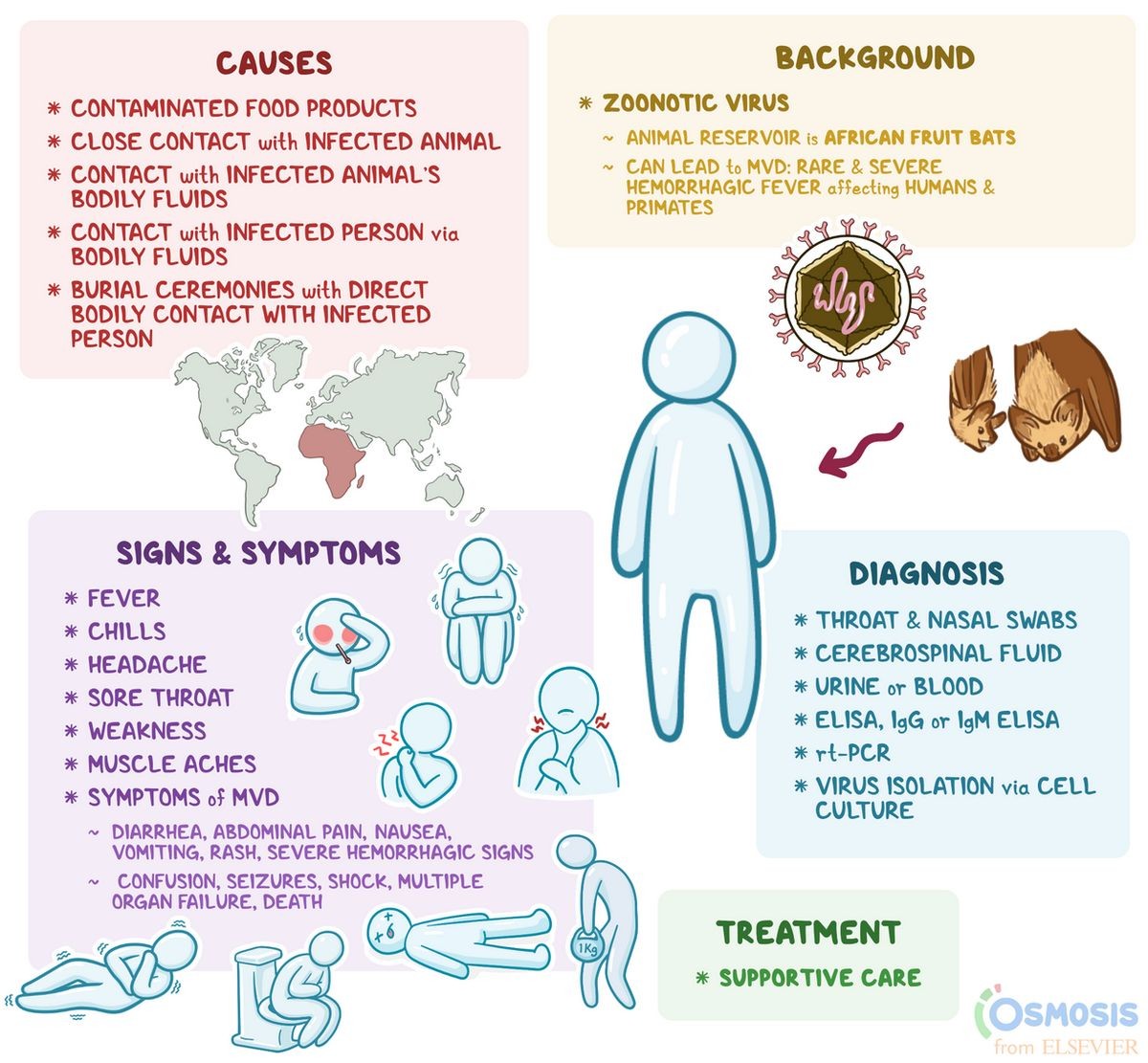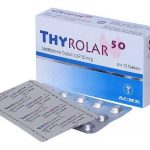
Contents
- 1 Marburg Virus Disease
- 1.0.1 What causes Marburg virus disease?
- 1.0.2 What are the symptoms of Marburg virus disease?
- 1.0.3 Diagnosis of Marburg virus disease
- 1.0.4 What is the treatment for Marburg virus disease?
- 1.0.5 What is the prognosis for Marburg virus disease?
- 1.0.6 Is it possible to prevent Marburg virus disease?
- 1.0.7 Outbreaks of Marburg virus disease
Marburg Virus Disease
In 1967, laboratory workers in Marburg, Germany were hospitalized with an unknown disease. They exhibited symptoms including fever, diarrhea, vomiting, bleeding from various organs, shock, and circulatory collapse. In this outbreak, 31 people were infected and seven died. The source of infection was traced to a virus infecting African green monkeys imported from Uganda and used for polio vaccine research. This virus was designated as a new virus family called Filoviridae. The other members of the family are Ebola viruses. Marburg virus disease is caused by the Marburg virus.
Recent outbreaks of Marburg virus disease have occurred in Uganda. In 2012, 15 individuals were diagnosed and four people died (27% fatality rate). A health-care worker also died from Marburg virus disease in 2014. The source of exposure is unclear. Marburg virus is a close relative of Ebola virus and produces similar signs and symptoms. About 80 people in contact with the deceased individual were observed for signs and symptoms of the disease, but no one else contracted it.
What causes Marburg virus disease?
Marburg and Ebola viruses are zoonotic infections transmitted to humans from other animals. Although the animals containing both viruses are unclear, it is thought that humans contract them from monkeys and/or bats. There is no evidence for insect vectors. Human-to-human transmission occurs through direct contact with an infected person’s bodily fluids, such as saliva, tears, excretions, vomit, and blood. Marburg viruses are not spread by air droplets.
People at risk of Marburg virus disease include those who come in contact with African monkeys and bats, individuals who do research on these viruses, and miners in Africa who are exposed to bats. Veterinarians and those who care for infected patients or remove bodies of deceased infected patients are also at high risk.
What are the symptoms of Marburg virus disease?
Symptoms usually occur suddenly after an incubation period of five to 10 days and include:
- Fever
- Diarrhea
- Vomiting
- Bleeding from organs
- Shock and circulatory collapse
About five days after the initial symptoms, additional symptoms may occur, including a rash, nausea, chest pain, sore throat, abdominal pain, and diarrhea. Later stages of the disease include more severe symptoms such as jaundice, pancreatic inflammation, severe weight loss, delirium, liver failure, and massive hemorrhaging with organ dysfunction. The case fatality rate ranges from 23% to 90%. Diagnostic tests are used to rule out other diseases with similar symptoms, and people exposed to Marburg virus are usually isolated for 21 days.
Diagnosis of Marburg virus disease
Most individuals with Marburg virus infections are treated in intensive-care units. Specialists involved in treatment include critical-care specialists, hematologists, infectious-disease specialists, hospitalists, and lung specialists. The diagnosis is usually confirmed through laboratory tests like polymerase chain reaction (PCR) and enzyme-linked immunosorbent assays (ELISA) that detect the Marburg virus.
What is the treatment for Marburg virus disease?
There is no specific treatment for Marburg virus disease. Supportive hospital care is given to patients to maintain their fluid and electrolyte balance, replace lost blood, and ensure adequate oxygen supply. This care is provided in intensive-care hospital units. There are no effective home remedies for Marburg virus infections.
What is the prognosis for Marburg virus disease?
The prognosis ranges from fair to poor, with a fatality rate of 23% to 90%. Individuals cared for in an intensive-care unit have a better chance of survival. Complications that can occur with Marburg infection include retinitis, orchitis, hepatitis, uveitis, transverse myelitis, and encephalitis.
Is it possible to prevent Marburg virus disease?
There are no approved antiviral drugs or vaccines for Marburg viruses. Preventive measures include isolating infected patients and using barrier protections such as gowns, gloves, masks, and shoe coverings. It is recommended that health-care professionals treating Marburg virus-infected patients wear hazmat suits and follow appropriate decontamination procedures.
Outbreaks of Marburg virus disease
Researchers suggest several reasons for the increase in outbreaks:
- Destruction of habitats of monkeys and bats brings humans into close contact with these animals.
- Poor economies have led to hunting and consumption of wild animals like monkeys.
- Infected individuals from isolated villages are brought to major cities, spreading the disease.
Africa experienced a severe Ebola virus outbreak in 2014-2015, with patients infected outside of Africa for the first time. The potential entry of Marburg virus into this lethal arena is concerning.
By clicking Submit, I agree to the MedicineNet’s Terms & Conditions & Privacy Policy and understand that I may opt out of MedicineNet’s subscriptions at any time.
Medically reviewed by Robert Cox, MD; American Board of Internal Medicine with subspecialty in Infectious Disease
Pigott, David C. "CBRNE — Viral Hemorrhagic Fevers." Medscape.com. Mar. 16, 2017. .
United States. Centers for Disease Control and Prevention. "Marburg Hemorrhagic Fever (Marburg HF)." Dec. 1, 2014. .
United States. Centers for Disease Control and Prevention. "Viral Hemorrhagic Fevers (VHFs)." Sept. 18, 2018. .


